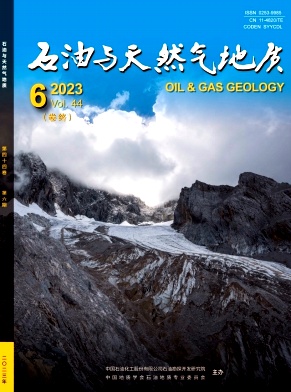Application of joint PP and PS inversion to the exploration of shale-gas reservoirs
Q1 Earth and Planetary Sciences
引用次数: 1
Abstract
In recent years,the development of shale oil and gas shows that shale heterogeneity and lateral orientation have relatively great impacts on single well shale gas production,recovery factor and the economy of shale gas exploitation,and natural micro-fracture is the main factor resulting in shale heterogeneity. Accordingly,to carry out research on the natural micro-fractures and prediction of sweet spots within shale has become an inevitable choice for successful emplacement of high-yielding wells and improving economic benefits of shale gas exploitation. Based on the high resolution 3C /3D seismic data in Marcellus shale play within Appalachian Basin,North America,natural micro-fracture zone of Marcellus shale was predicted by means of fast and slow converted shear wave( PSV-1 / PSV-2) integrated interpretation,then the open / closed fractures and gas-bearing property of extensional micro-fractures were separately identified and detected by utilizing combined attribute parameters like joint inversion density,velocity ratio of compressional and converted wave( vP/ vS) extracted from joint inversion of compressional wave and converted shear wave( PP-PS). In addition,drilling data were used to verify the sweet spots predicted by geophysical method in Marcellus shale. Joint inversion technique( PP-PS) has outstanding advantages in natural extensional micro-fractures identification and gas-bearing detection,which can effectively reduce the drilling risk.PP - PS联合反演在页岩气藏勘探中的应用
近年来页岩油气开发实践表明,页岩非均质性和横向定向对单井页岩气产量、采收率和页岩气开采经济性影响较大,而天然微裂缝是造成页岩非均质性的主要因素。因此,开展页岩内天然微裂缝研究和甜点预测已成为成功布置高产井、提高页岩气开发经济效益的必然选择。以北美Appalachian盆地Marcellus页岩高分辨率3C /3D地震资料为基础,采用快慢转换横波(PSV-1 / PSV-2)综合解释方法对Marcellus页岩天然微裂缝带进行了预测,然后利用联合反演密度、压缩速度比、压缩速度比等综合属性参数分别识别和探测了张性微裂缝的开闭裂缝和含气性纵波和转换横波(PP-PS)联合反演提取的转换波(vP/ vS)。此外,利用钻井数据验证了地球物理方法预测的Marcellus页岩“甜点”。联合反演技术(PP-PS)在天然张性微裂缝识别和含气探测方面具有突出的优势,可有效降低钻井风险。
本文章由计算机程序翻译,如有差异,请以英文原文为准。
求助全文
约1分钟内获得全文
求助全文

 求助内容:
求助内容: 应助结果提醒方式:
应助结果提醒方式:


